 |
How to drive a manual car smoothly.
You might be able to drive a manual car but can you drive one smoothly?
We'll show you how to move off, brake, change gear and steer in a smooth way. Your passengers will definitely appreciate it. |
|
Video on how to drive a manual car smoothly
Subscribe for more tips on our YouTube channel
 |
Seat adjusted correctly?
It's important to have your seat and steering wheel adjusted correctly.
If you're sitting too close to the steering wheel or too far away then it can affect how you use the controls.
With both hands on the steering wheel your elbows should be slightly bent. You should also be able to fully press the clutch down comfortably without stretching and have a slight bend in the knee. |
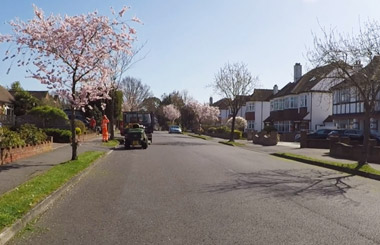
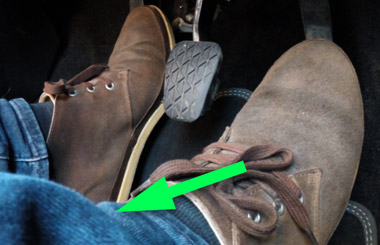 |
How to move off smoothly.
Raising the clutch too soon can make the car move off in a jerky way or even stall. Holding the clutch at the biting point for a couple of seconds as you move off can help and don't raise the clutch too suddenly.
If possible, once you have the biting point, try resting the heel of your left foot on the floor. Try not to let your foot hover in the air. This will really help you control the clutch.
But not everyone is comfortable resting their heel on the floor so just do what works for you.
But only rest your heel on the floor once you have the biting point but not before
or otherwise as you dip and raise the clutch in traffic for example, your foot might might slide up the pedal and you'll have less control. You might even end up having to wiggle your foot back down to gain control again. To avoid this, don't rest your heel on the floor when you fully press the clutch down only when you get the biting point.
It's possible in a modern car to move off without any gas although it could stall or move off in a jerky way, especially if it's an older car or one with a small engine.
You'll also move off very slowly which you might want. But if you're trying to move off quickly like at a busy roundabout and you raise the clutch too fast without any gas then the car will stall.
When emerging onto a busy, as long as it's safe, don't be afraid to give a little gas. It'll be smoother, there's less chances of slowing someone down and less risk of stalling.
On a flat road you'd normally set the revs roughly towards 1 and a half. More when moving off uphill and no gas required downhill but extra gas needed when you want to move off quickly like at a busy roundabout or junction.
You won't move off smoothly if you're in the wrong gear. Move off in 1st gear or the car will either be jerky or stall.
|
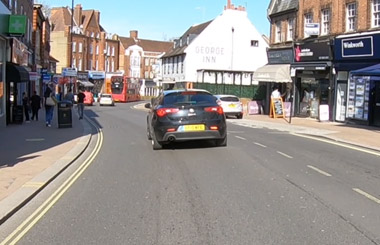
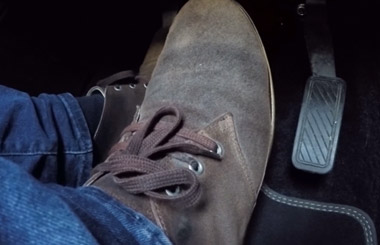
|
Braking.
Progressive braking uses less fuel and smooth stops are nice for your passengers too.
Some new drivers increase pressure on the brake until they stop abruptly.
Releasing the gas pedal slows the car down straight away. Gently press the brake pedal. Gradually increase pressure depending on how fast you want to stop. Once the cars almost stopped, ease off the brake so that there's hardly any pressure on the brake as it stops.
This will make your stops really smooth but it does take a bit of practise.
Pressing the clutch down too late when you're stopping can make the car shake or even stall. Press the clutch down about 2 car lengths before you stop completely.
You could also try driving in shoes that have a thin soul to help you feel the pedals better.
How you position your right foot can help too. If you can, position your right foot between the brake and accelerator and pivot on your heel between the 2 pedals.
Braking too late will always result in a hard stop.
Plan ahead so that you can slow down in time and smooth out your braking.
Driving too close to the vehicle in front and constantly having to brake or press the gas really makes for a jerky, stressful drive.
Anticipate what's going to happen next so that you're ready and don't have to brake harshly.
|
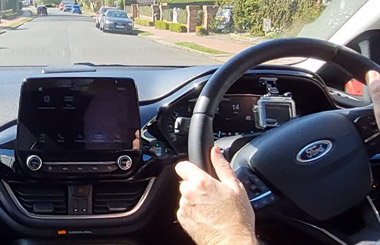
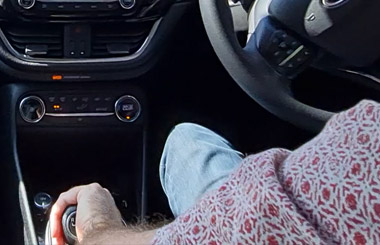
|
Gear changing.
Make sure that you increase speed before you change up a gear. If you change gear too early then the car will feel sluggish, it might shake and possibly stall.
If you move off in any other gear apart from 1st then it could stall. Although you can move off downhill in 2nd. You can also move off in 2nd if the car wheel spins in snow.
Some drivers experience a jerky gear change mostly when changing down to a lower gear. Releasing the clutch pedal too quickly can make the car bump. Changing down to the wrong gear for your speed can also cause the car to jerk.
There's a couple of things we can do to smooth out any jerkiness when you change down.
Try pressing the gas pedal lightly before you fully release the clutch.
Also, when you raise the clutch try holding it at the biting point for a second then with a slight amount of gas smoothly raise it all the way.
Don't rush the gear change. Thinking and planning ahead can help to keep it all smooth.
But remember that you might need to brake as you change down rather than pressing the gas depending on the situation.
It takes a bit of practise and getting used to your car and the engine sound will definitely help.
Although the simplest way to change down gear is to make sure that you choose the correct gear that matches your speed and just raise the clutch smoothly and not suddenly.
Whether you're changing up or down gear, don't rush it and always release the clutch smoothly. |
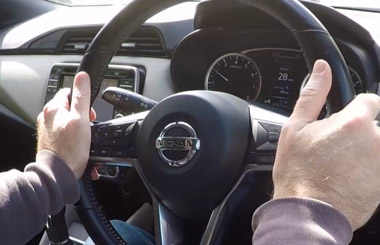
|
Steering.
You don't need to hold the steering wheel tightly.
Try to avoid any sudden, jerky movements.
Keep the steering smooth and steady with both hands on the wheel unless you're using another control.
You can keep your hands fixed on the steering wheel for small adjustments.
For larger turns, feed the steering wheel through your hands using the pull-push method.
As always planning ahead and being ready for what's coming up next will help prevent having to do any sudden, jerky movements which could also affect the stability of the car. |
 |
 |
 |
| Finding a good driving school is difficult, find out here why you've just discovered one of the best ones... (click) |
Refresher driving lessons are getting more and more popular, find out more about it here... (click) |
Intensive lessons for people wanting to learn to drive quick. Click here to find out if you're up for it... (click) |
|
|
|

